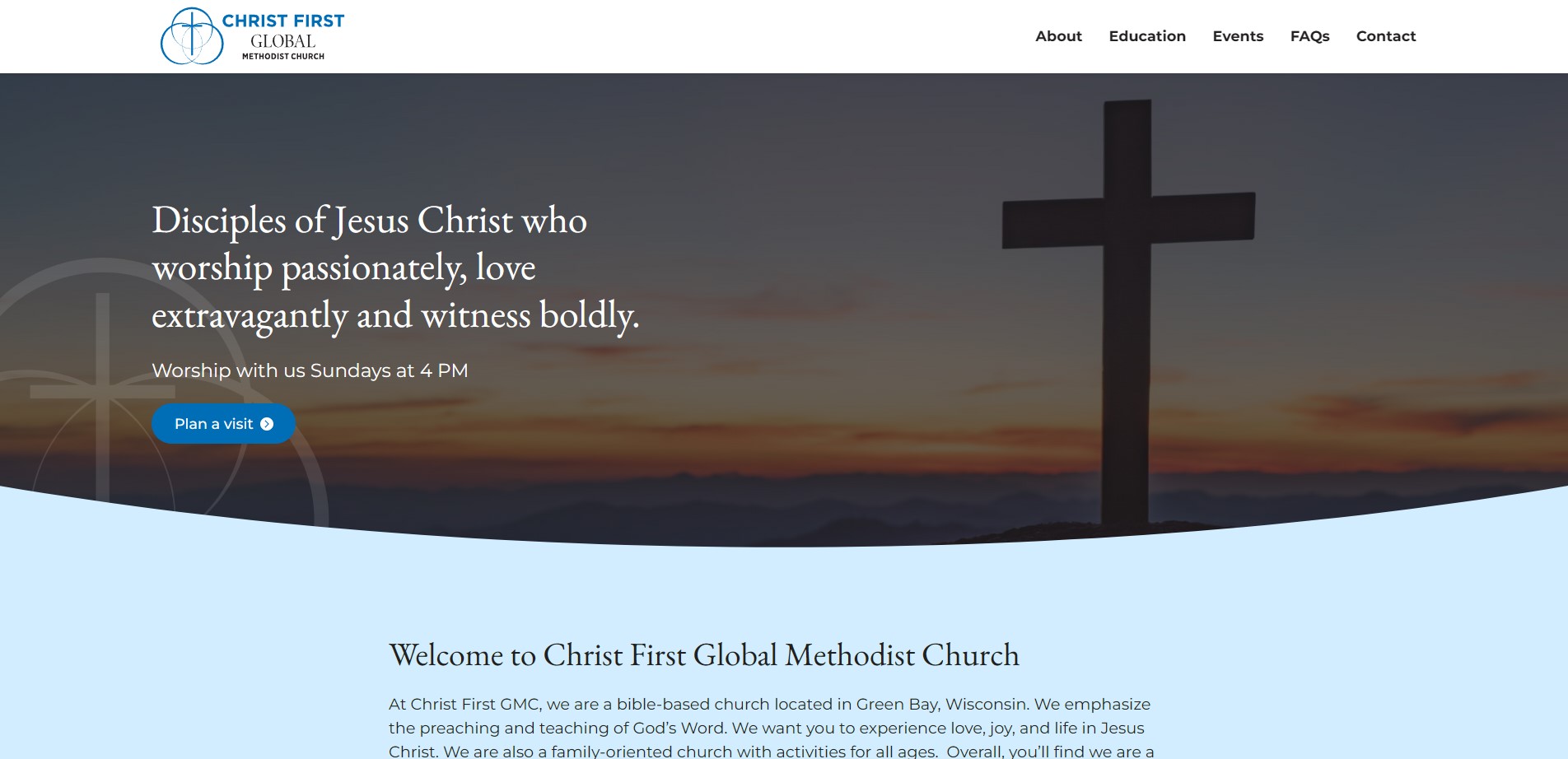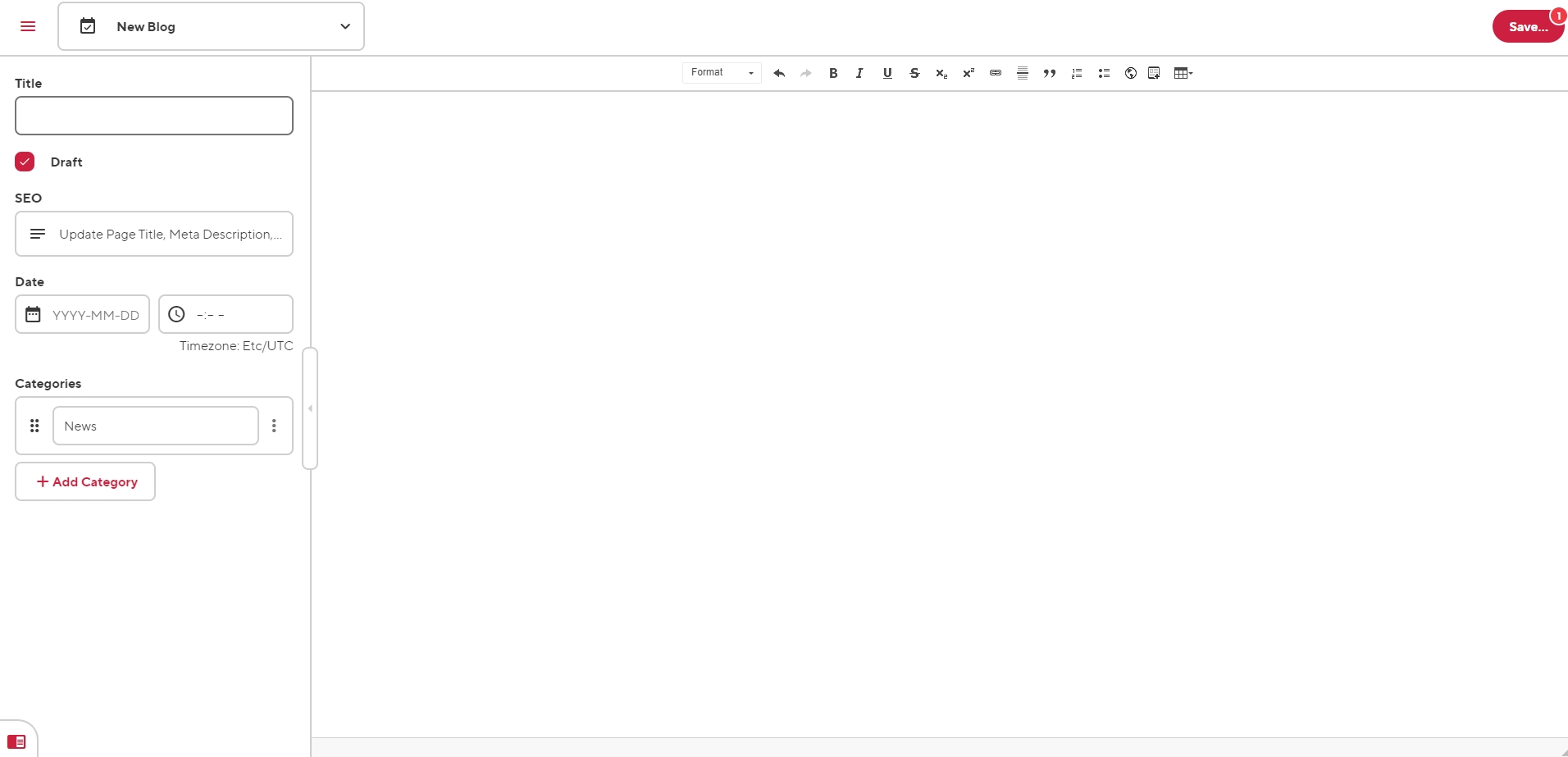
Table of Contents
- Logging In
- Admin Dashboard Overview
- Editing Basic Website Information
- Managing Pages
- Editing Basic SEO Information
- Adding New Event Posts
- Special Considerations
Logging In#
Your website content is managed with the content management system CloudCannon. To log in to your admin dashboard, navigate to
https://www.christfirstgmc.org/ic-sec=christ-first-admin
Enter your username and password and click "Sign In".
Admin Dashboard Overview#
Home#
Home is where you can find your Live URL, a preview of your website, documentation, and a list of recent activity.
Inboxes#
See your form notifications, check spam, resend notification emails and export contacts to a spreadsheet.
Pages#
Here you will find a list of all your website pages. Pages are broken out by their section rather than being one large group.
Data#
Data acts as a database of global information used throughout your website. Data is split between Global Partials, Locations and Site Settings. Global Partials are common blocks used throughout the website such as global Call to Action blocks. Site Settings are general settings like your business name, address, phone number and so on.
Editing Basic Website Information#
Managing Business Info#
- Navigate to Data > Site Settings.
- Here you can edit your business name, address, phone, fax, email and social media links.
- As soon as you make a change, you will see the save button in the top right corner activate. Click "Save" to publish your changes to the website, or continue to other pages that you need to edit. Alternatively, your changes will be bulk saved and you can publish all changes together.
Managing Social Media#
- Navigate to Data > Site Settings.
- Your website is preconfigured with options for Facebook, Instagram, X, LinkedIn, TikTok and YouTube.
- Click on the social media platform you want to add a link to and simply paste your page's URL in the link field.
- Click "Save", to publish your change. Alternatively, your changes will be bulk saved and you can publish all changes together. As soon as you add a link to any of these, the appropriate icon will be displayed in the footer of your website.
Managing Pages#
- Navigate to Pages. Here you will see a list of all your website's pages. Select the page you are looking for by clicking on the preview image of the page. You can also open the editor by clicking the three vertical dots in the top right corner and then selecting your options.
- Note: To open the visual editor, if not already open by default, click the three vertical dots and choose, "Open With >" and then select "Visual Editor.” If already in the editor, open the dropdown menu in the top left corner and select visual editor.
- Once the editor is open you will see a similar content structure for all pages. All primary pages will contain a Title, SEO metadata, followed by all content blocks the page uses.
- To edit a content block, click on the content block field, this will open all the fields contained within the block. Once you are done making your changes, click "Save" in the top right corner, or continue to other pages that you need to edit. Your changes will be bulk saved and you can publish all changes together.
Editing Basic SEO Information#
If you ever feel the need to edit SEO metadata for your website, SEO settings can be found on each individual page. Navigate to the page you want to edit and click open the "SEO" content block. Here you will find Page Title, Meta Description, and Featured Image for your page.
Adding New Event Posts#

- To add a new event, select the + Add button at the top right corner of the screen. Then click, + Add Event. Optionally, you can also clone and existing post to use as a starting point.
- Once the editor is open you will see a similar content structure as all your pages. The post editor will be split between two main sections, the data editor and the content editor.
- Within the data editor, enter your post title, SEO data like page title, meta description and featured image, date, author and category.
- Note: Your SEO featured image, is used two ways for event posts. The featured image is used in metadata for social media and search engines, but also as the featured image of the event itself. This get's displayed at the top of every post.
- Add event details. Click on Event to open up the full list of event details. Enter in an event summary, location start and end date, start and end time.
- Add post content within the content editor and use the formatting options of the WYSIWYG editor to style your post as you need.
- When ready to publish, ensure that your post is switched out of a draft state and click Save.
Special Considerations#
Image Handling#
All images throughout the website are configured and served through an image transformation service called Imgix. Imgix automatically handles all images that are uploaded to the website, resizes them and transforms them into modern image formats like AVIF and WEBP.
Uploading Images#
Important!
You will never need to upload a full-resolution image to your website. Images are the most resource-intensive form of media that your website will load. Loading full-size images will negatively affect the performance of your website and will hurt your search rankings. If you're unsure how to handle images for the web, please reach out to Insight Creative, Inc. for assistance.
To optimize an image: Use a photo editing tool such as Photoshop or https://squoosh.app/ to optimize images for the website. Open your image and then set the quality to something like 80 - 85 and then download.
Make sure to primarily use .jpg image files. .png files save a lot more image data and can easily make an identical image four times the file size of a .jpg. You should almost always shoot for under 200kb file size for all images you load to the website. When done right, it’s rare that the loss of image quality will be noticeable.
Bulk Saving of Edits#
You can now take advantage of CloudCannon's bulk saving of edits. Make multiple edits across pages, files, and collections and save them all simultaneously in a single batch. CloudCannon records your edits as you go, allowing you to save them all in one click. This means you only need to wait for your site to build once.
